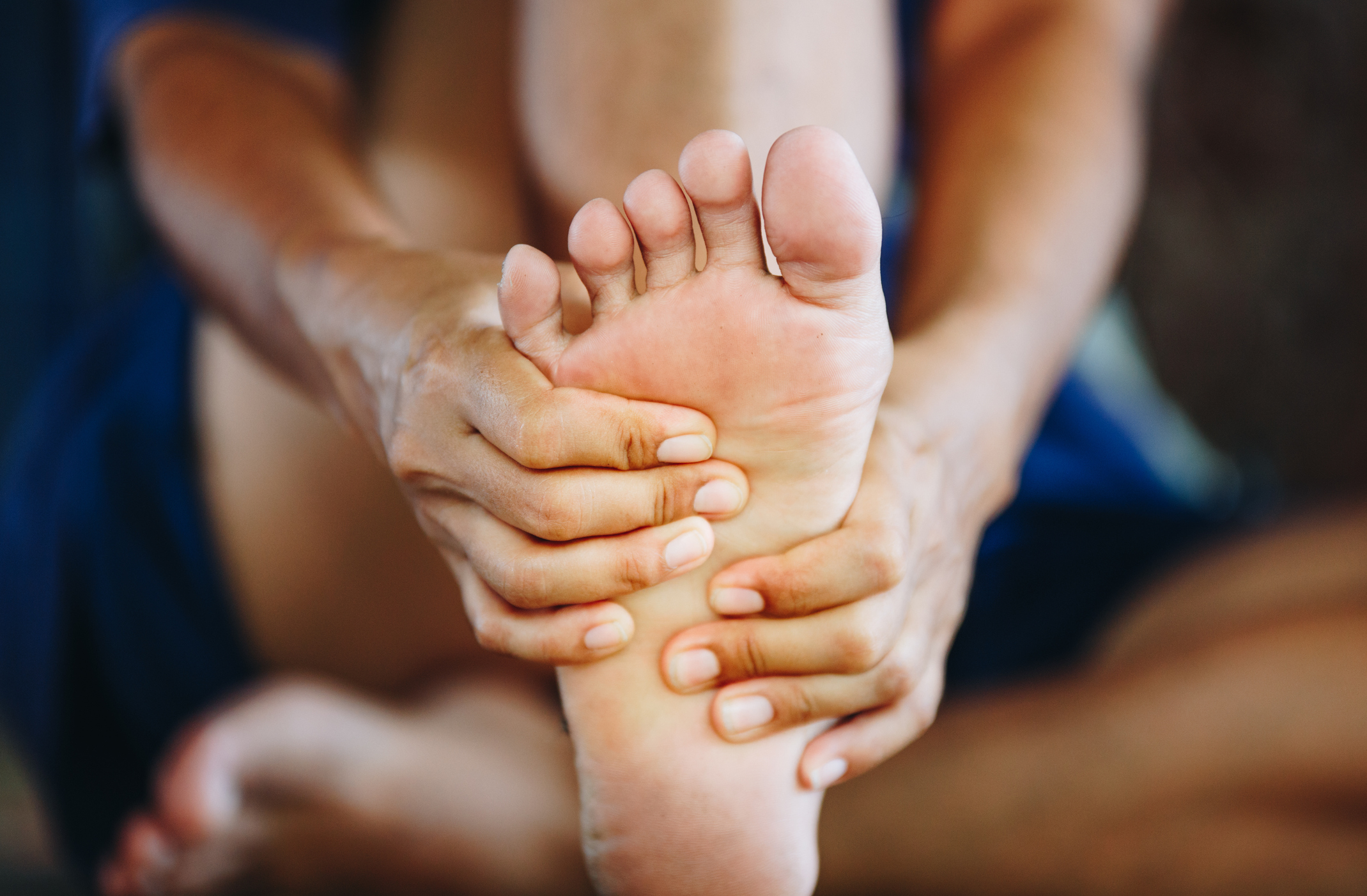Get Easy Health Digest™ in your inbox and don’t miss a thing when you subscribe today. Plus, get the free bonus report, Mother Nature’s Tips, Tricks and Remedies for Cholesterol, Blood Pressure & Blood Sugar as my way of saying welcome to the community!
When that burning and tingling in your feet is a warning sign

My favored position for reading is to sit with one foot tucked under me. If I sit this way for too long, though, I end up with that “pins and needles” feeling in my foot. But when I start walking around again, the pins and needles go away.
But if pins and needles, or a burning sensation in your feet, is something you experience frequently without knowing why, that’s a whole other story.
It’s likely caused by a nerve condition that, in and of itself, isn’t dangerous.
But, according to recent research, more and more people are experiencing this condition, and it’s a warning signal that other more serious health conditions could be just around the corner.
Understanding the peripheral nervous system
The peripheral nervous system is made up of nerves that extend out from the spinal cord to the arms, legs, hands and feet.
Larger nerve fibers, which are protected by a layer of protein and fat called myelin, control things like muscle strength and balance.
But the smaller, unprotected nerve fibers transmit information about pain and temperature to the brain.
Small fiber neuropathy is a disease that affects those small nerve fibers. That’s why small fiber neuropathy causes tingling, burning, pain and sometimes numbness.
Small fiber neuropathy is on the rise
Researchers at the Mayo Clinic in Rochester, Minnesota have completed a study suggesting that small fiber neuropathy is on the increase.
The study looked at records for all persons who were diagnosed with small fiber neuropathy in Olmstead County, Minnesota and nearby counties during a twenty-year period.
The 94 people identified were then compared with 282 people of similar age and sex who did not have neuropathy. All participants in the study were followed for about six years.
Results showed that small fiber neuropathy occurred in 13.3 people out of 100,000 and that this rate steadily increased during the six years of the study.
On its own, this increase is not worrisome. But its connection with other serious diseases is indeed of concern.
Neuropathy’s connection to heart disease and diabetes
People with small fiber neuropathy are more likely to have diabetes and heart disease as well. They’re also more likely to be obese.
In the Mayo Clinic study, the people with neuropathy had an average body mass index (BMI) of 30.4, compared to 28.5 for those who did not have neuropathy (a BMI of 30 or higher is considered obese).
About half of the people with neuropathy had diabetes, compared to 22 percent of those without neuropathy.
And, people with neuropathy were also more likely to have heart attacks (46 percent compared to 27 percent for those without neuropathy).
“Based on these findings, people with small fiber neuropathy should be screened for heart problems and their blood glucose should be monitored for signs of diabetes,” says study author Dr. Christopher J. Klein of the Mayo Clinic in Rochester.
Dr. Klein also points out that this could just be a vicious cycle that needs to be broken.
“Another possibility is that increasing levels of overweight and obesity in our area could be a factor in the higher rates of small fiber neuropathy. Higher body mass index, or BMI, is a risk factor for diabetes and high triglycerides, which may also lead to neuropathy.”
Other conditions associated with neuropathy are lupus, celiac disease and vitamin deficiencies. In fact low levels of vitamin D have been associated with the condition in diabetics.
What you can do
Taking steps to lower your risk of diabetes is one way to prevent the pain of small fiber neuropathy.
Another way to avoid neuropathy is to lower your risk of heart disease.
In August, the European Society of Cardiology (ESC) issued their 2021 “Guidelines on Cardiovascular Disease Prevention in Clinical Practice.” It’s an extensive document that lays out in great detail the risk factors for cardiovascular disease and the interventions that are needed to prevent it.
Finally, a healthy eating plan like the DASH diet will go a long way to heading off high blood pressure, high cholesterol, and obesity.
While avoiding the pain of neuropathy, you’re bound to become a healthier person overall.
Editor’s note: Are you feeling unusually tired? You may think this is normal aging, but the problem could be your master hormone. When it’s not working, your risk of age-related diseases skyrockets. To reset what many call “the trigger for all disease” and live better, longer, click here to discover The Insulin Factor: How to Repair Your Body’s Master Controller and Conquer Chronic Disease!
Sources:
Burning and tingling in your feet? You may have small fiber neuropathy Eureka Alert
Understanding Small Fiber Neuropathy UNC Health Talk














